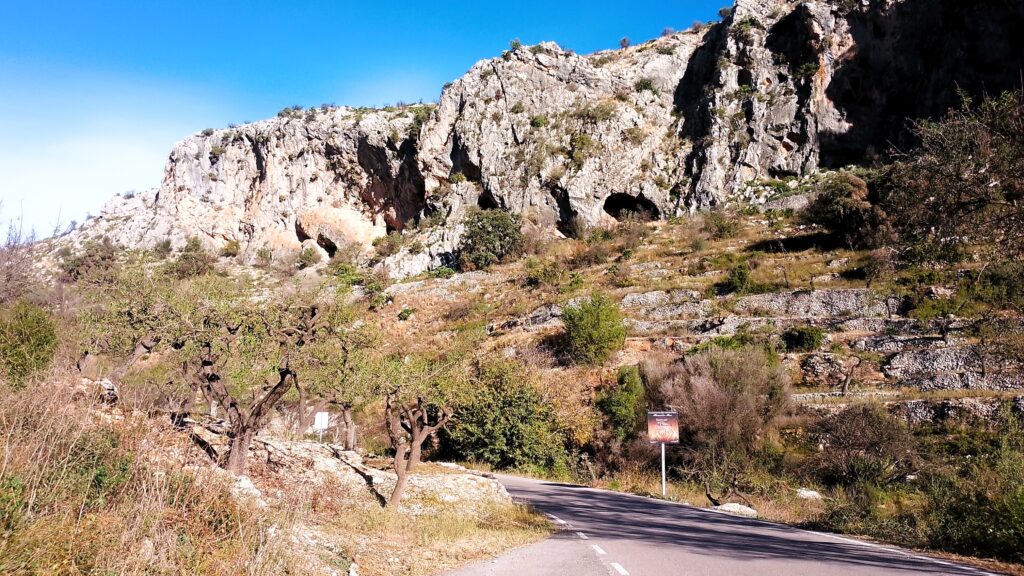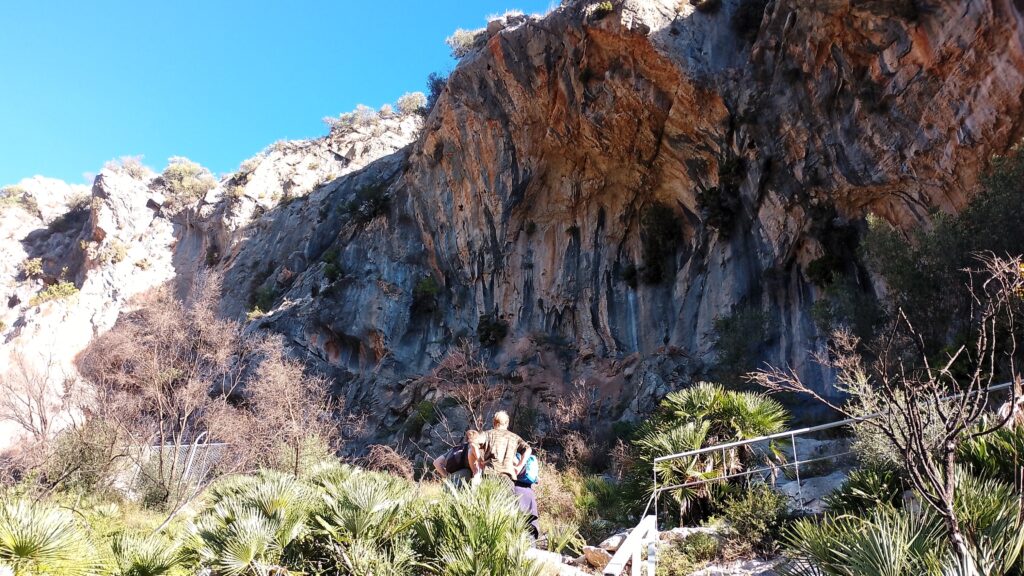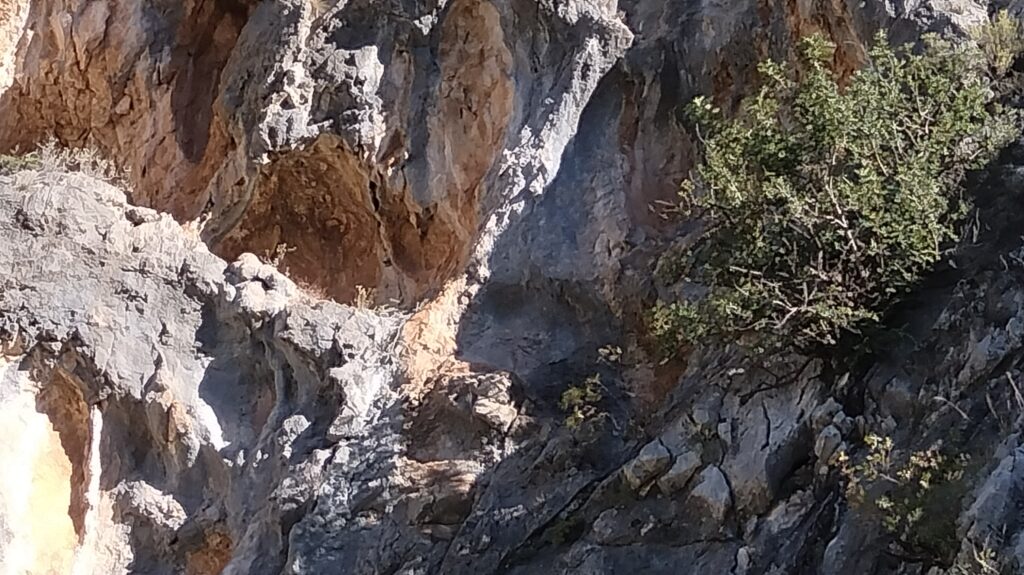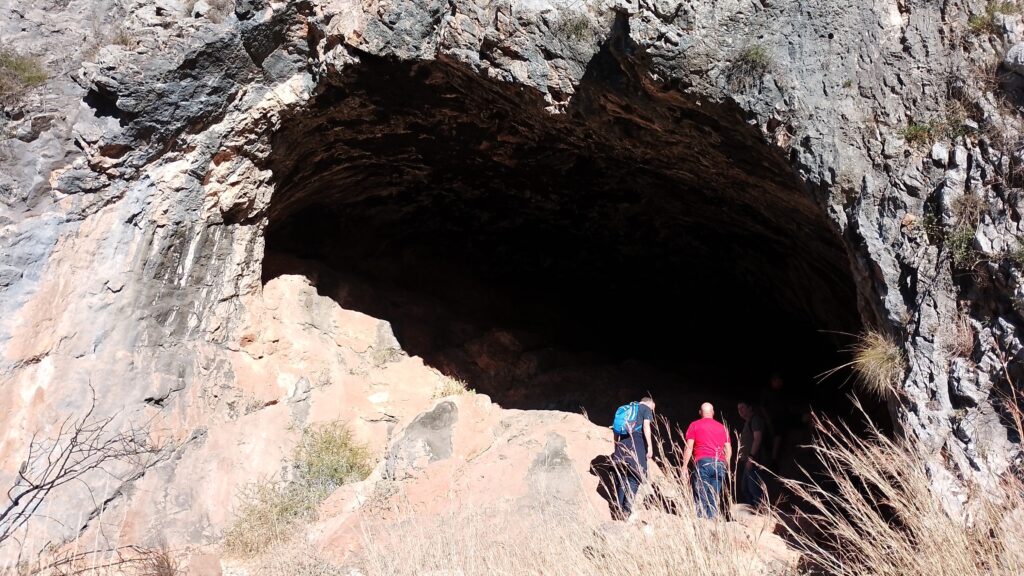
The Santuari del Pla de Petracos is considered to be one of the best examples of Schematic and Levantine Art in Europe and has been declared a Site of Cultural Interest (BIC) and a World Heritage Site.
Discovered in 1980, the site consists of eight rock shelters of which five display painted motifs in an intense red colour – the Iberian Schematic Art – which has been estimated to date from the early Neolithic period whilst another shelter has a Levantine Art style painted design from a later era.
It’s an amazing place to visit, located next to a quiet and narrow country road which connects the Vall d’Ebo with the Vall de Pop, and you should allow an hour to fully appreciate the site. A visit could also be combined with a visit to the Cova del Rull which is about 20 minutes drive away.

Getting There
The Santuari del Pla de Petracos is about 45 minutes drive from Xàbia. The easiest route is via Pedreguer, taking the CV-720 inland through Llosa de Camacho and into the Vall de Pop, passing through the villages of Alcalalí, Parcent and Benigembla.
About 6 kilometres further on after Benigembla, look out for the brown sign [Pla de Petracos] and turn right about 200m later – the junction is clearly marked for the Santuari del Pla de Patracos, thanks to the Ajuntament de Castell de Castells as well as another handy brown sign.
It’s a narrow road, recently re-surfaced, and the speed limit of 40kph is well worth observing as you wind your way around blind bends; look out for the ruins of the Ermita de Petracos on the right-hand side, partially covered in vegetation. After about 2½ kilometres, there is a clear parking area on the left hand side and the site is located in the cliffs across the road.
Opening Hours
The Santuari del Pla de Petracos is open to the public 365 days a year.
Admission Price (2023)
The Santuari del Pla de Petracos is free access 365 days a year.
The Santuari del Pla de Petracos

The site is located on the left side of the Barranc de Malafí and involves a 50m climb up a series of steps cut into the slope, so it’s not recommended for pushchairs, wheelchairs or those with mobility issues. The climb is not too steep and the cliffs seem to be breaking over the head much like a giant solid wave.
At the top of the path, the site separates into two distinctly different parts. We recommend taking the right-hand option first – ART LLEVANTE – where the path climbs steeply up to a small enclosed position, barely regarded as a cave or shelter and protected by a metal fence, the security required due to the fragility of the example of Levantine Art, a very small motif of a wounded deer pierced by arrows in what appears to be a hunting scene. It’s barely discernible; a metal pointer tries to assist but it takes some time to spot the image.

Returning to the junction, the rest of the examples lie to the left of the sign – ART MACRO ESQUEMÁTIC. Once again, the paintings are fenced off for their protection and, at first, it’s difficult to make them out. However, there are information panels which help to identify their positions, all in natural shelters in the cliffs. One of the most characteristic (Shelter V) can be seen in the photo above, just left of centre, a human figure with its arms stretched upwards as if in reverence (the site is thought to have been a meeting place for worship for people with deep beliefs) along with some decorative motifs.
Another painting (Shelter IV) appears to be a representation of a family, a round head most obvious, whilst others need a little more work to determine, even though there are information panels showing their design. All of them are clearly show some sort of worship in progress and a large stone protruding from the ground in front of them may well be related to that veneration.
A little further on from the paintings is a deep cave which has clearly provided some shelter for thousands of years. The climb into its depths can be a little tricky, especially if wearing the wrong footwear (flip-flops and sandals are not recommended) but the effort is worth it if only to reach the back wall, turn around and take in the amazing image of this narrow gorge framed by the mouth of the cave. It could also be a nice place for a picnic. The eagle-eyed will also notice small motifs drawn onto the rock in some places but how authentic these are to the rest of the site is not clear.

Reproductions of the paintings can be viewed in the Ethnological Museum located in the town hall building in Castell del Castells which is open Friday and Saturday 11.00-13:30 and 17:00-19:30 whilst it’s open only for the morning session on Sunday. Admission is 3 euros with reductions for groups and free for children.
Related Links
MARQ – Santuario de Pla de Petracos
